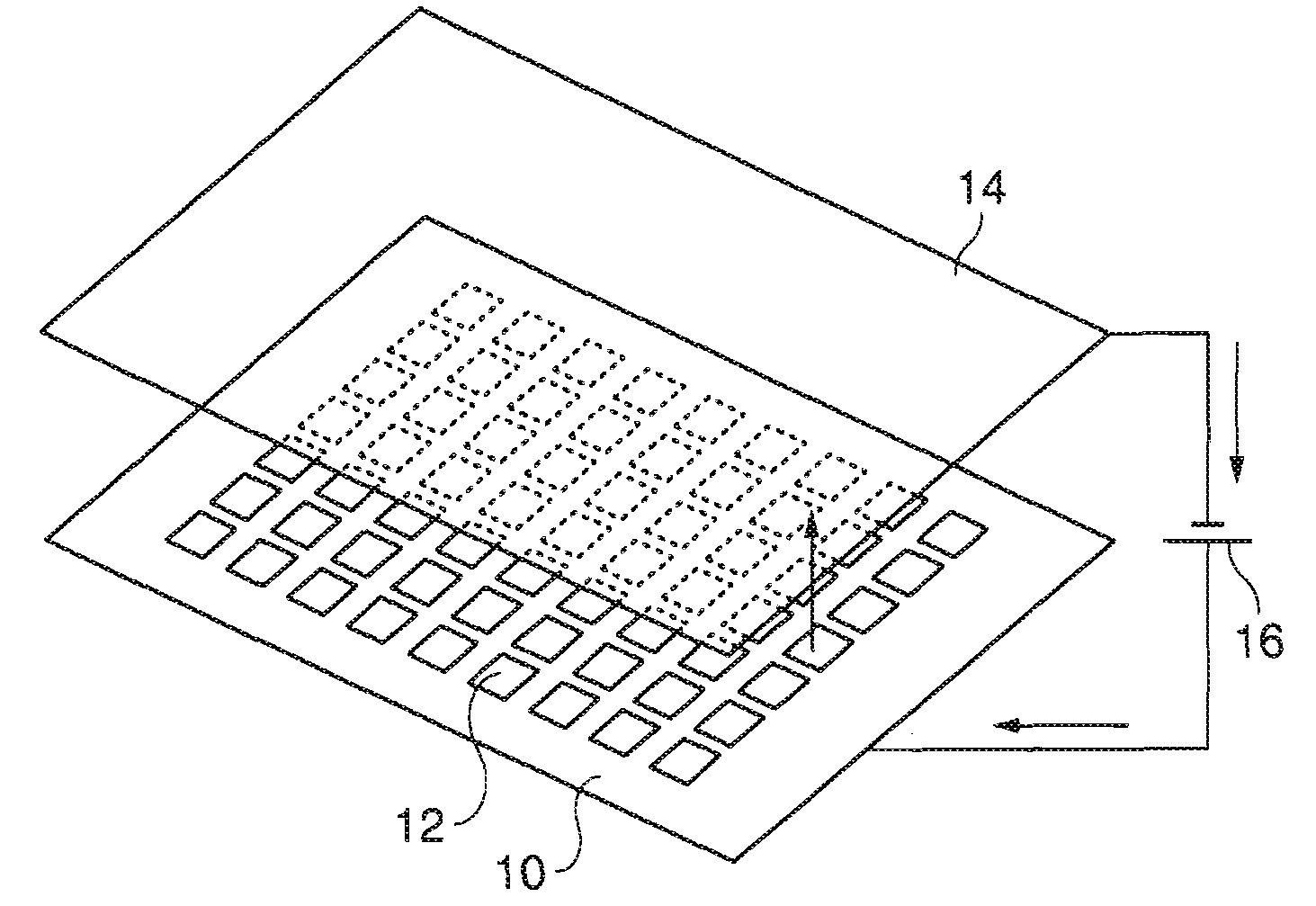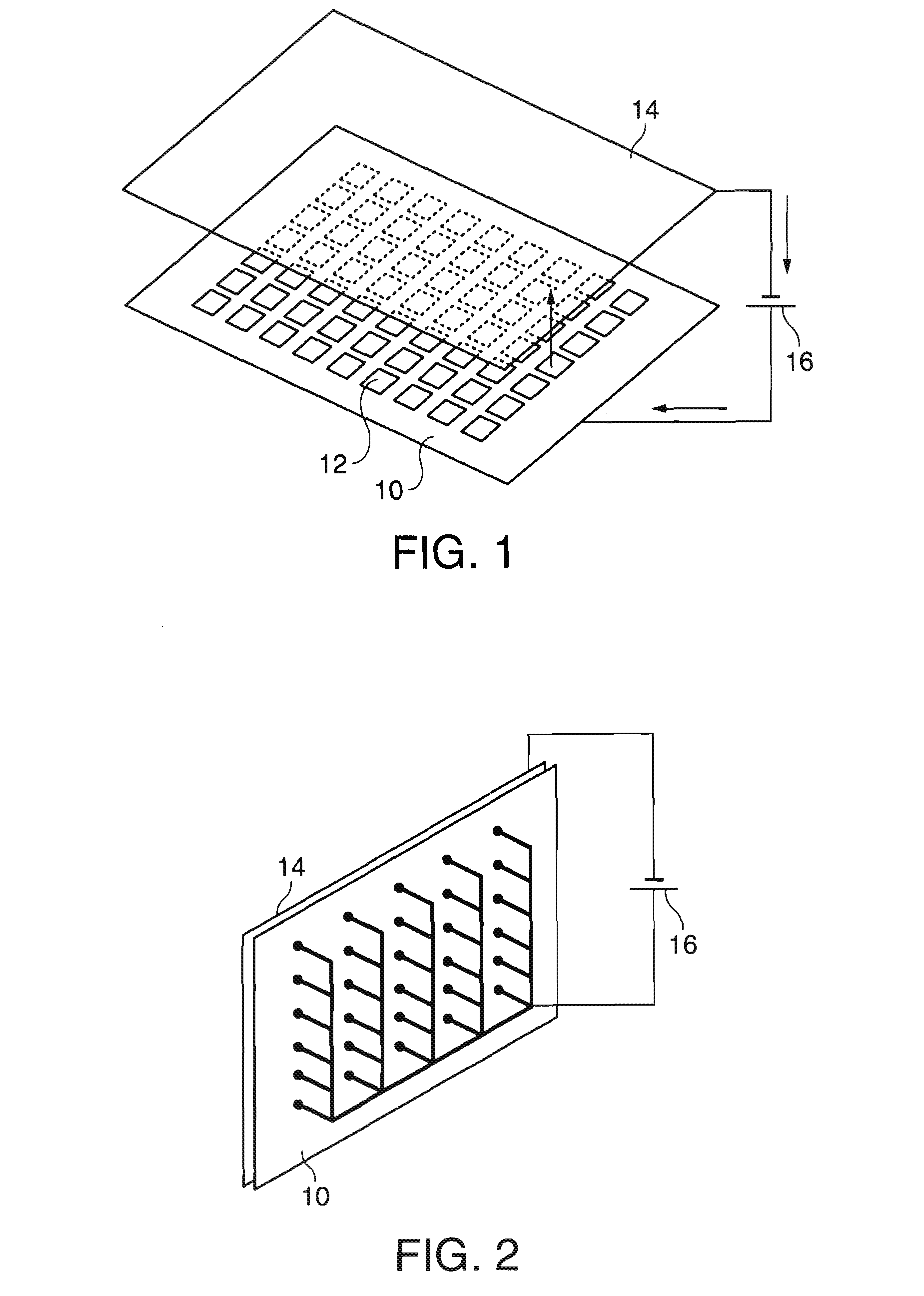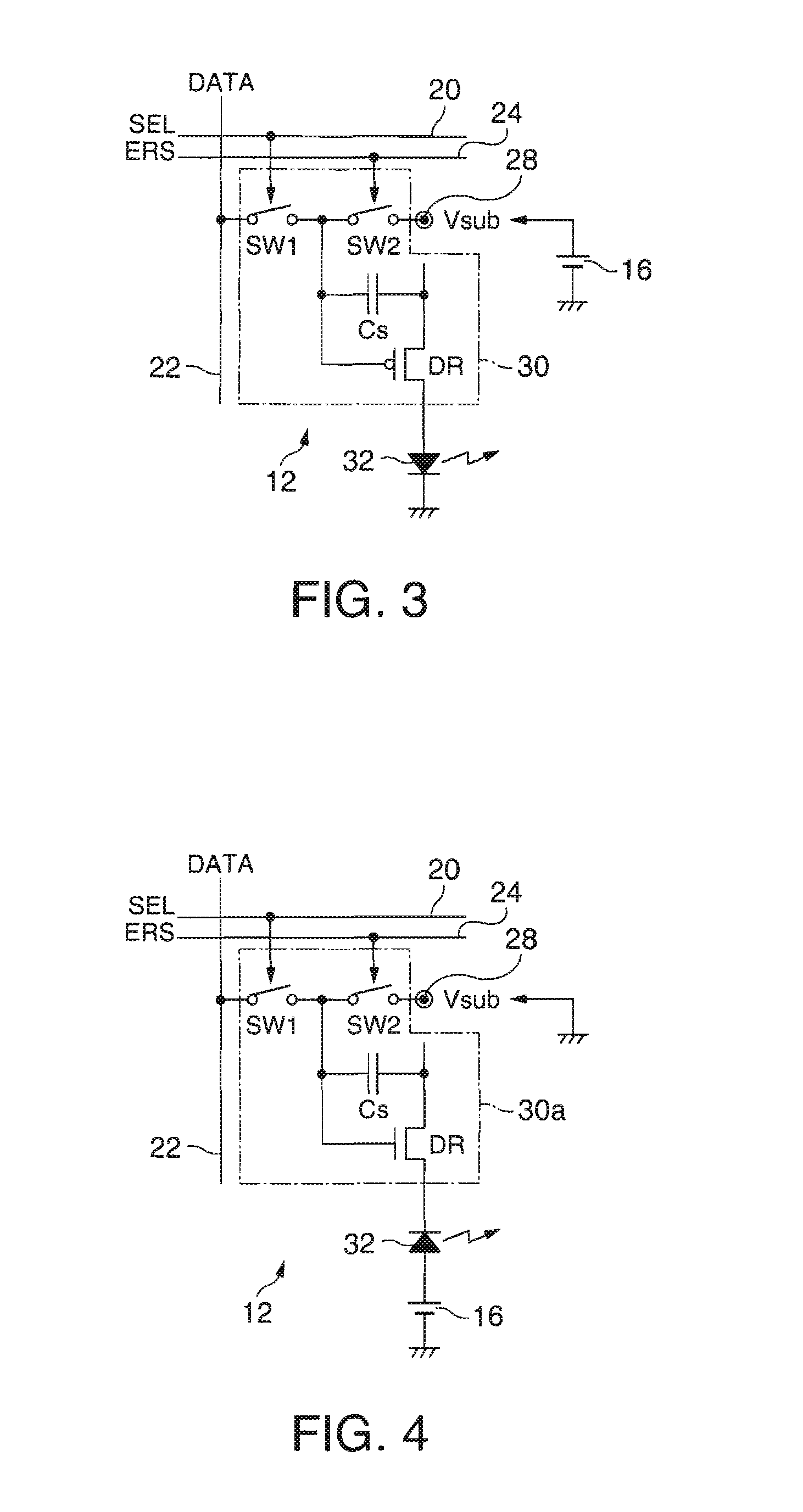Electroluminescence device, manufacturing method thereof, and electronic apparatus
a manufacturing method and technology of electroluminescent devices, applied in the direction of electroluminescent light sources, thermoelectric devices, electric lighting sources, etc., can solve the problems of reducing the ability of capacitors to be formed, and generating considerable parasitic capacitance between the conductive substrate and the wiring, so as to increase the storage capacitance, and reduce the parasitic capacitance
- Summary
- Abstract
- Description
- Claims
- Application Information
AI Technical Summary
Benefits of technology
Problems solved by technology
Method used
Image
Examples
Embodiment Construction
[0040]Embodiments of the present invention will now be described.
[0041]FIG. 1 is a schematic drawing describing a basic structure of an organic EL device according to each of the embodiments. The organic EL device includes: a substrate 10 having conductivity; a plurality of pixel units 12 formed on one side of the substrate 10; and a common electrode 14 shared by the plurality of pixel units 12. As shown in FIG. 1, a power source 16 is connected between the substrate 10 and the common electrode 14.
[0042]As long as conductivity is provided to at least one side of the substrate 10, the substrate 10 may be an insulating substrate, while it is preferable that the substrate 10 be a conductive substrate composed with conductors. Examples of the substrate 10 for the former option above include the ones where a conductive film composed of metals such as aluminum or of indium tin oxide (ITO) is deposited on one side of the insulating substrates such as a glass, a quartz, and ceramic substrat...
PUM
 Login to View More
Login to View More Abstract
Description
Claims
Application Information
 Login to View More
Login to View More - R&D
- Intellectual Property
- Life Sciences
- Materials
- Tech Scout
- Unparalleled Data Quality
- Higher Quality Content
- 60% Fewer Hallucinations
Browse by: Latest US Patents, China's latest patents, Technical Efficacy Thesaurus, Application Domain, Technology Topic, Popular Technical Reports.
© 2025 PatSnap. All rights reserved.Legal|Privacy policy|Modern Slavery Act Transparency Statement|Sitemap|About US| Contact US: help@patsnap.com



